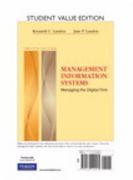Question
TerMite Hills (TH) owns the rights to land which may or may not have copper, a mineral used in semiconductors. There are three options for
TerMite Hills (TH) owns the rights to land which may or may not have copper, a mineral used in semiconductors. There are three options for TH regarding exploration for copper on the land: partner, search for copper on their own, or sell the rights to the land. It is estimated that there is a 35% chance of finding copper on the land.
TH could establish a partnership with an experienced mining company. In this case TH would receive a payment of $75,000 from the partner company and would also share in the returns if copper is found. In the case where copper is found, TH is estimated to receive $200,000 for their share of the copper in the land.
TH could explore for copper on their own. This alternative has a cost of $100,000 no matter what happens as TH must pay for the exploration. If copper is found, TH would receive the entire return estimated at $750,000.
The third option for TH is to sell the rights to the land to another party for $120,000.
Which of the following are true regarding the decision tree associated this problem? (Please tell me why B is the correct answer).
A. Here are at least four event nodes in the decision tree.
B. None of the answers are correct.
C. The initial or root node of the decision tree is an event node.
D. The initial or root node of the decision tree has 2 branches.
E. There are two outcomes for at least two event nodes in the decision tree.
Step by Step Solution
There are 3 Steps involved in it
Step: 1

Get Instant Access to Expert-Tailored Solutions
See step-by-step solutions with expert insights and AI powered tools for academic success
Step: 2

Step: 3

Ace Your Homework with AI
Get the answers you need in no time with our AI-driven, step-by-step assistance
Get Started


